Today we have plenty of different names of haircuts that have recently appeared on the market.
And probably, some of you have heard such a word combination as “trim haircut”.
And we assume that, if you heard it, you might be wondering what kind of haircut it is.
So in this article, we are going to investigate a bit on the meaning of the trim haircut term.
For the start, we will find out what a trim haircut is and explain that to you.
Then, we will compare the two most common terms, in particular, a trim haircut and a haircut in order to see what makes them distinct (if they are distinct at all).
Finally, we will tell you what benefits this type of haircut has and how you can figure out that you need it.
What Is a Trim Haircut Exactly?
When hearing this term, many people give out the same reaction: “trim what?!”
Yeah, it may sound a bit embarrassing and even odd, we know. We are all used to the term “haircut”, as well as the term “trim”. And when we go to the salon to get a trim, we know exactly what they are going to do to our hair. But what about that trim haircut?
Is it the same as the regular haircut? Or the trim? We guess that you are a bit confused already!
First of all, let’s make things clearer. We are all well familiar with getting a normal haircut.
That’s when our hair is being cut to make it shorter and gain a certain shape and style.
But how many of us are aware of what the definition of a trim haircut in fact is? You might be surprised, but even some experienced stylists would say that there is no difference between the two because, in both scenarios, the hair gets simply cut!
However, there is a difference, even though it may not be very obvious at first. In simple words, a trim haircut is a type of haircut when the ends of the hair are cut off in order to remove split and frayed ends.
At the same time, the overall hairstyle still remains the same.
When you ask your hairdresser to do a haircut, it means that it could be a couple of inches or more removed, depending on your needs and the overall condition of the hair.
For the majority of you such an explanation might be more than enough, but we would still love to dig deeper and explain better what makes a regular haircut and a trim haircut so distinct (even though some stylists and hairdressers don’t consider a trim haircut a separate type of cut).
What Is the Difference Between a Regular Haircut And a Trim Haircut?
If you are not a professional stylist or a hairdresser with over ten years of experience, you will hardly be able to tell the difference between these two terms.
But still, it exists, even though it may seem to be not very prominent at the beginning.
There is in fact a clear and obvious difference between asking your hairdresser for a trim and asking for simply a haircut.
But wait, what is the purpose of a trim haircut then, you may be wondering?
See, a trim usually consists of a haircut that retains the same shape, but it is shorter in length.
In other words, it is simply about cutting off just the right amount of hair that is needed for your mane to be healthy! There is no goal to compromise on the style at all!
Naturally, if a customer pays a visit to a hair salon and asks for a trim, he or she definitely doesn’t want to walk out with a completely different hairstyle on their heads! They want it to look almost exactly the same as it did before, just a little bit neater and better shaped.
On the other hand, if a customer wants a haircut, that usually means that he or she is hoping for much more than just one or two inches being cut off from the ends. Having a haircut means that a person is looking for a new style altogether.
Or, as an option, a customer could be looking to cut off about five inches of hair or even more.
That can be quite a dramatic transformation,as you can understand, and usually it is recommended for those who have badly damaged hair.
Such a procedure, as you can see, would not be considered a mere “trim” at all.
So, now that you are better informed about the major distinction between a regular haircut and a trim haircut, you will surely not make a mistake when visiting a salon and asking for a trim!

How Many Inches Should a Trim Haircut Be?
This is another frequent question that customers tend to ask when they pay a visit to a salon to refresh their current hairstyle.
When a hairdresser or a stylist asks whether they want a trim or a proper haircut, people typically ask how many inches the trim haircut is.
Well, that’s a good question folks! Let’s try and figure it out!
If you ask a hairdresser or a hair stylist what length should a trim haircut be, you will get a different answer.
And it makes sense: each and every stylist that gets asked this question will answer it differently because a trim can have distinct meaning to distinct people.
To one person, it could be half an inch and to another person, it could be two or three inches.
Let’s say, if you have long hair, having a couple of inches of it cut off is ok for you and it’s not a big loss. But if your hair is very short – for example, if you have a bob or a pixie haircut! – then every inch of your hair matters!
In general, the purpose of getting a trim haircut is to remove split ends or at least to prevent them from appearing.
If the customer has more than two inches of split ends already, then the hair stylist may recommend a bigger trim than usual. In fact, it could even turn into an actual haircut depending on how much damage there is to the hair.
Of course, it is always up to the customer how many inches of hair they want to cut off the lengths of the mane. Another big and important factor should be the health of the hair.
See, a trim means taking off the dead ends without compromising on the overall shape and style of your hair. However, it is not always possible.
For example, a customer might pay a visit to a salon with the goal of only getting an inch or two off, but the state of his or her hair might require a more serious treatment so the person would walk out with considerably shorter hair!
Although this can be a hard decision for some people (especially those who grow their hair for a long time), the health of your mane should always remain a priority.
And sometimes, taking only an inch or two off the overall length is not enough to restore the hair and keep it looking healthy.
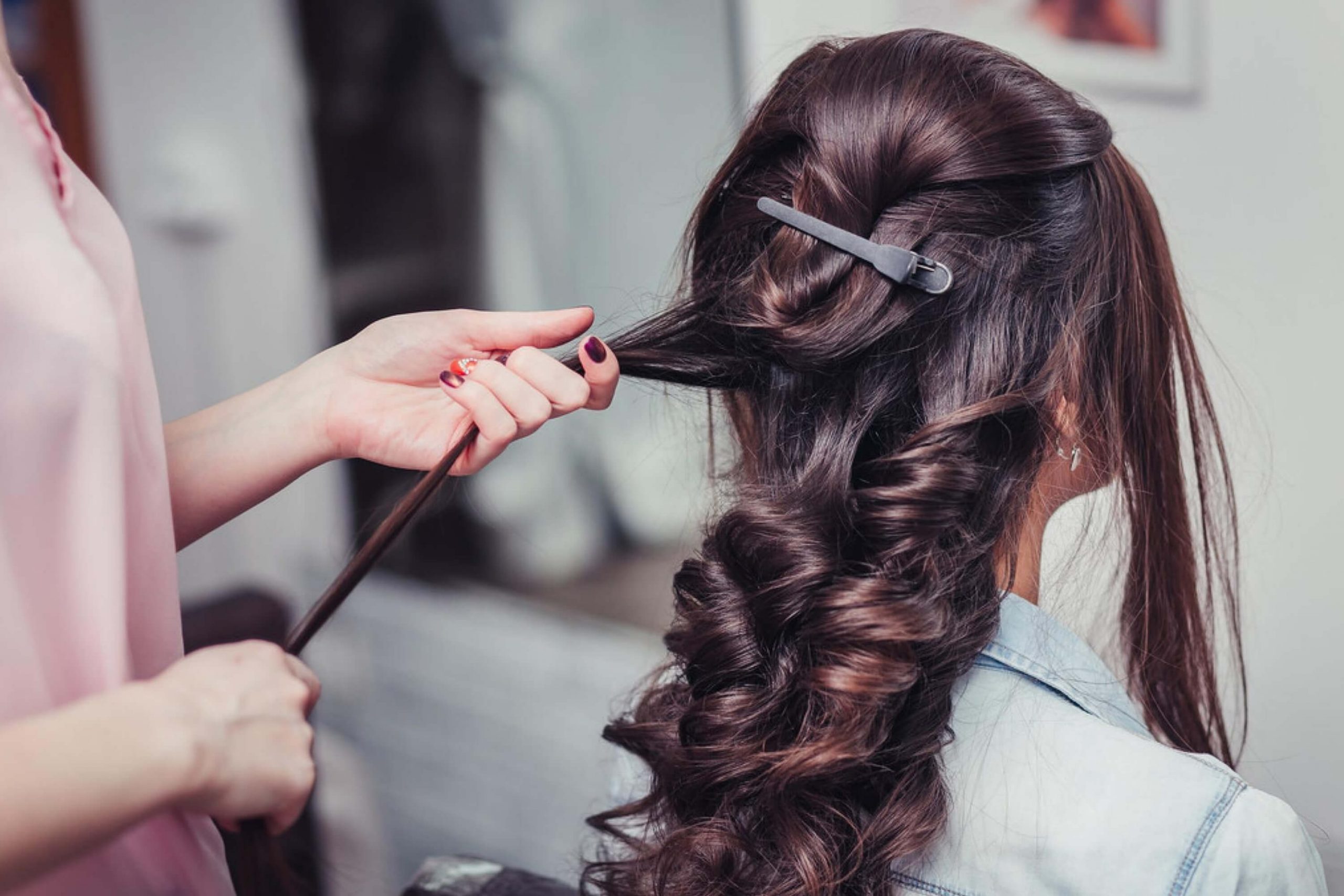
Are There Any Benefits Of Getting a Trim Haircut?
Well, except for helping your hair remain healthy and getting rid of the split ends (or preventing them), are there any other benefits of having a trim haircut? You might be surprised, but there are!
It Eliminates Split Ends
Split ends don’t just make your hair look messy and unmaintained.
If you don’t do anything to them, sooner or later they will spread higher and higher along your hair resulting in weak and prone to breakage tresses that snap off!
Split ends are extremely common and some people are more prone to them than others.
But split ends on your hair are not likely to cause any problems if they are cut off as soon as they appear. This is why getting your hair trimmed regularly is the key to healthy looking hair.
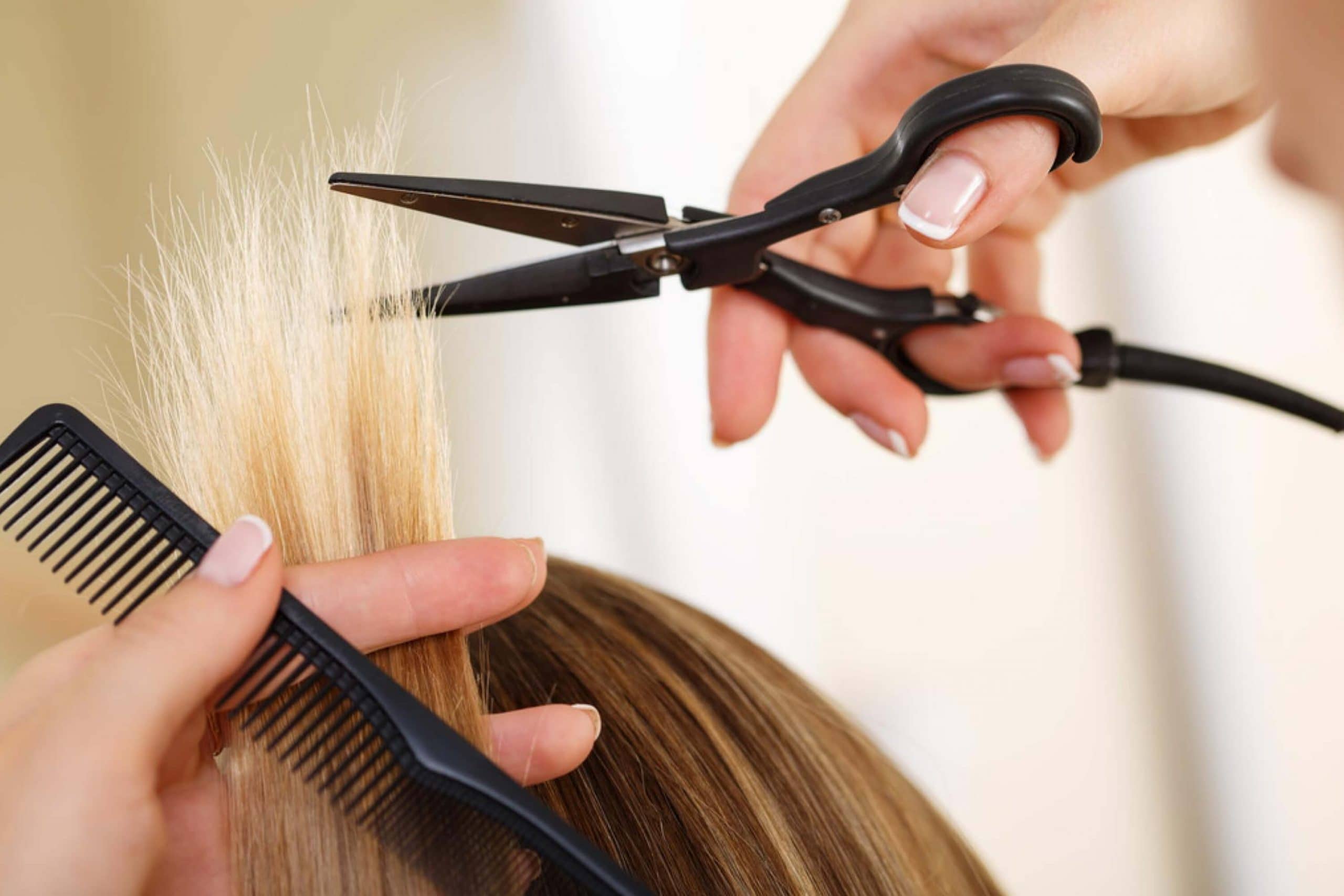
It Makes Your Hair Grow Better
Having long hair is a dream of almost every girl! And trimming your locks regularly can significantly contribute to achieving those waist-long strands!
Dead ends can prevent your hair from growing, as you probably know.
But if you remove them in time regularly, this will open the way for accelerated growth and new hair.
Of course, you should take into consideration that the healthier the hair is now, the more likely it will grow faster and achieve proper length.
On the other hand, dead and weak ends tend to break off, preventing hair growth altogether.
Trims Prevent Frizz
Split and frayed ends often lead to even more frizz, especially in cold weather conditions (e.g. during the winter).
This can make hair look and feel extremely damaged and dull. But if you get a trim haircut regularly, it is the best solution for preventing and reducing frizz caused by frayed, split ends.
Many people notice that, after removing the ends, their chevelure looks and feels bouncier and shinier, and the hair feels softer and fuller.
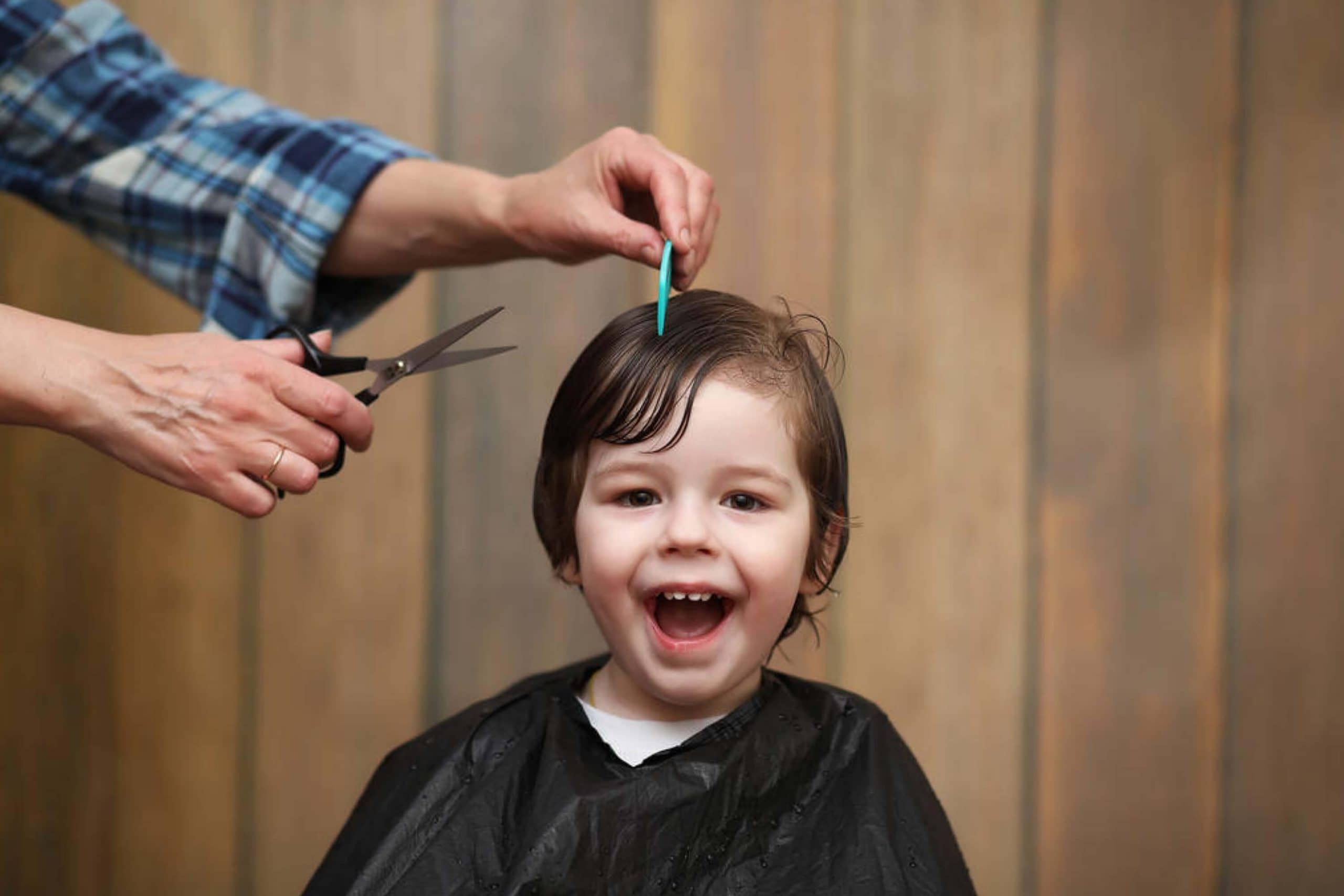
Related: What Happens If You Leave Conditioner In Your Hair Overnight?
It Makes Hair More Manageable
Did you know that styling damaged hair is rather difficult because it is less “obedient” and tends to resist what the stylist wants it to do?
Such hair is typically unresponsive to styling and looks frayed and frizzled.
This is why the best and most effective way to treat this is to simply cut the ends off and begin again.
Your hair will be easier to manage and it will open up more styling options.
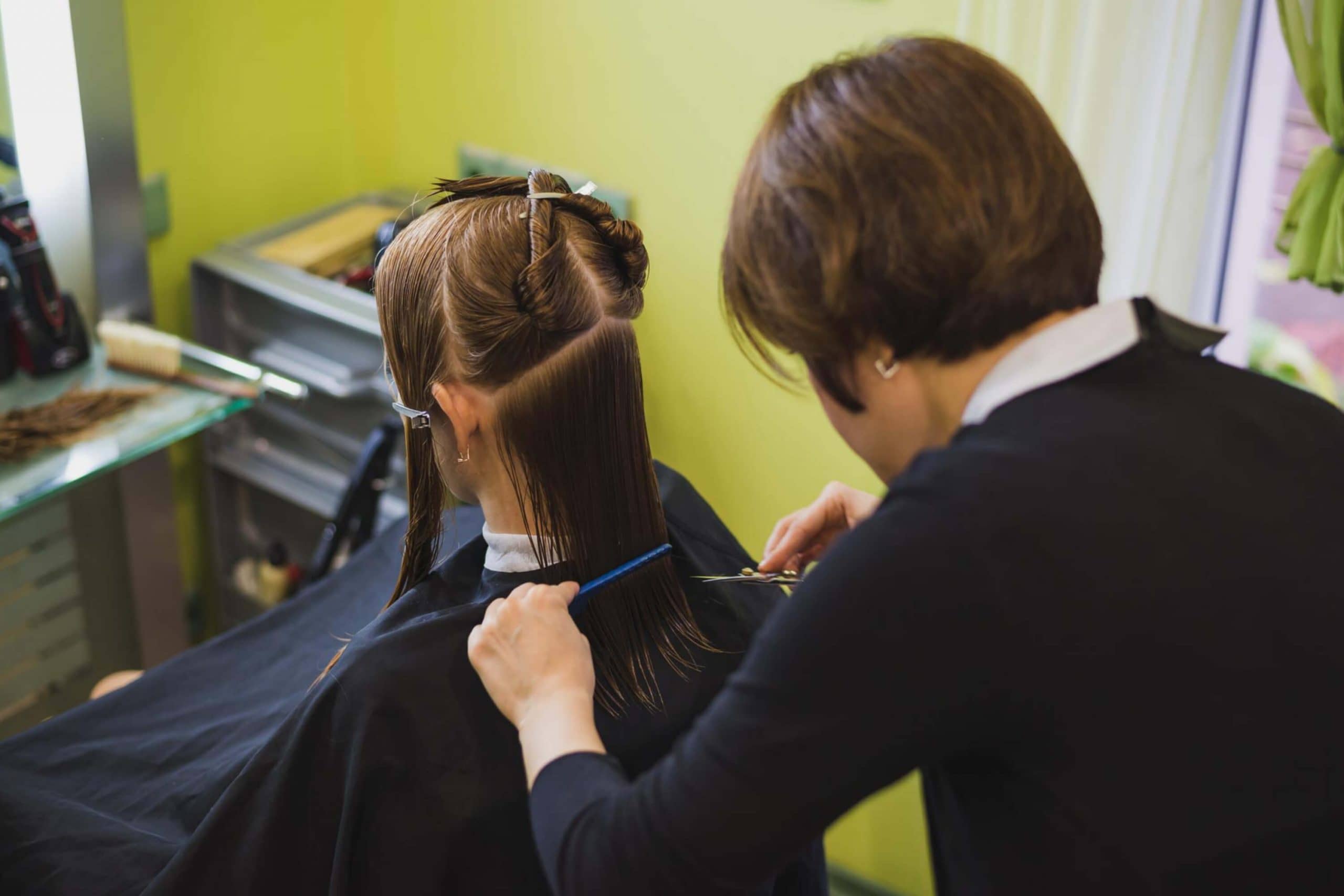
It Prevents Tangling And Knots
Hair that is damaged is typically much harder to detangle which often results in annoying and rather painful to remove knots.
Trying to detangle hair is not only a time- and nerves-consuming task, in addition it could also result in further damage caused by the tugging and pulling when you are struggling with those tangled parts of the locks and stubborn knots!
Fortunately, this can be easily prevented by getting a regular trim haircut as the less damaged the ends are, the less likely they are to get tangled.
How Do I Know That My Hair Needs a Trim Haircut?
Indeed, is it possible to figure out that your hair needs exactly this type of cut? In fact, it is.
And below you can find a few significant factors that will show you it is time to make an appointment at your local hair salon.

You Have Dry Or Split Ends. Or Both
This is the most obvious sign that literally screams about the fact that a trim haircut is needed! Do you have dry or split ends?
Then it is time to act!
By the way, the tips of your hair may also feel rough to the touch, which can make them appear dull and fuzzy.
If this is the case, it is best not to delay and cut the ends. You don’t want to risk them traveling up the hair shaft and causing further damage.
Related: What Happens If You Don’t Cut Your Split Ends?
Your Hair Gets More Prone to Breakage
Have you recently noticed that your hair became more fragile and now it breaks off?
This is the red sign! Weak and damaged hair becomes fragile and more prone to breakage.
In addition, you may notice that the ends of your hair snap off when you are styling or even combing them. In this case, regular trimming is the best option.
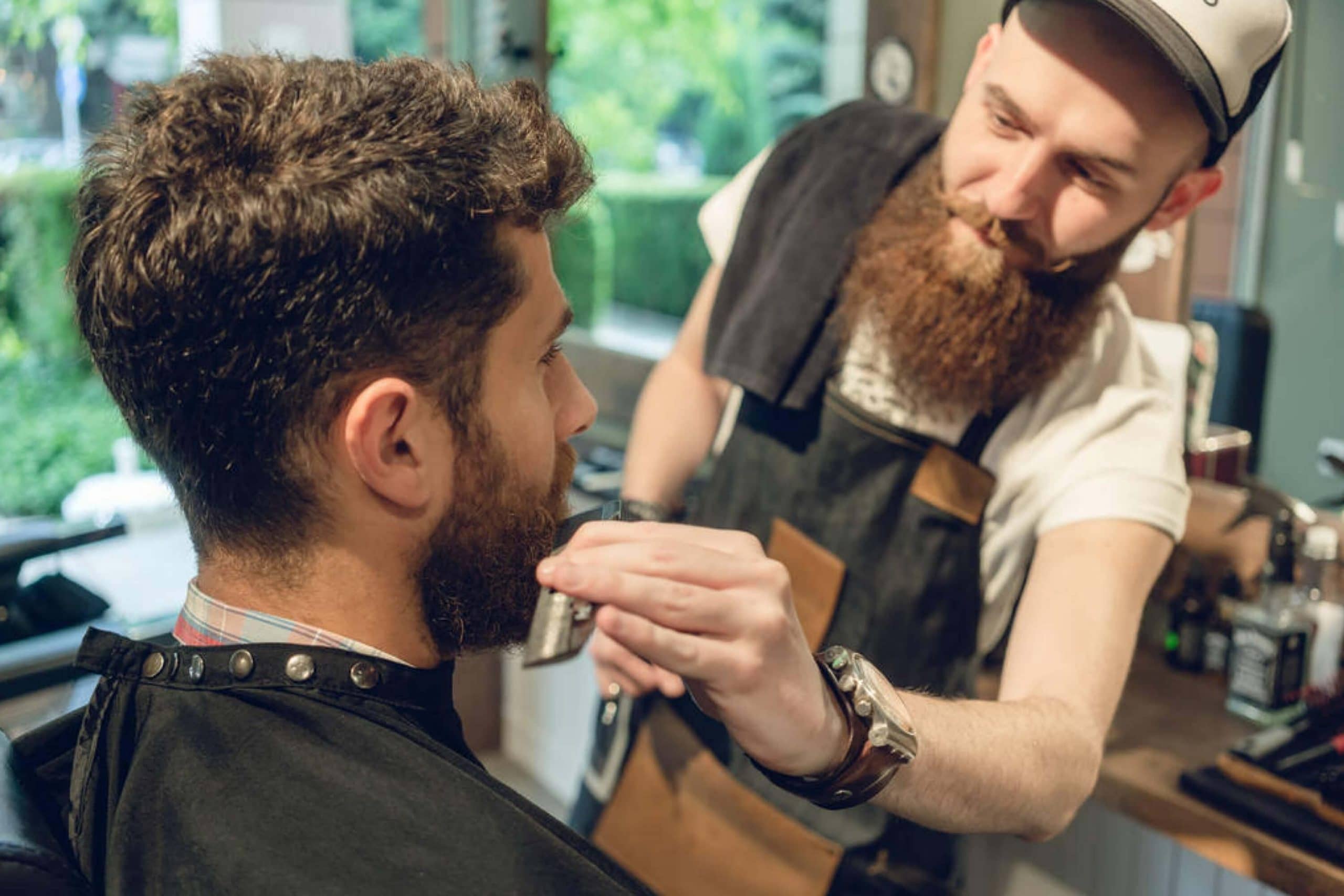
Your Hair Looks Dull And/Or Lacks Volume
Damaged hair doesn’t hold enough body and bounce because it’s weaker, therefore, it will be harder to style and maintain.
If you’ve noticed your hair isn’t as shiny or voluminous as it used to be, it could be that you are due a trim.
How Often Is It Necessary to have My Hair Trimmed?
You may be wondering now: how often is it best to visit a salon to have my hair trimmed for getting the optimal results?
Well, in general, it depends on your financial situation, but also, it depends a lot on the current state of health of your mane, as well as on your needs.
Many stylists recommend getting a trim every six weeks but we would say that it is not always possible for the majority of people, and besides, it may not even be needed! Simply take a look at the ends of your hair in order to know if it’s time for a trim.
As soon as a few split ends start to appear, you should start thinking about booking an appointment at the local salon.
It may so happen that some people can be able to spend several months without visiting a salon before they get a trim!
However, that is only possible if they have minimal split ends and their hair looks and is healthy.
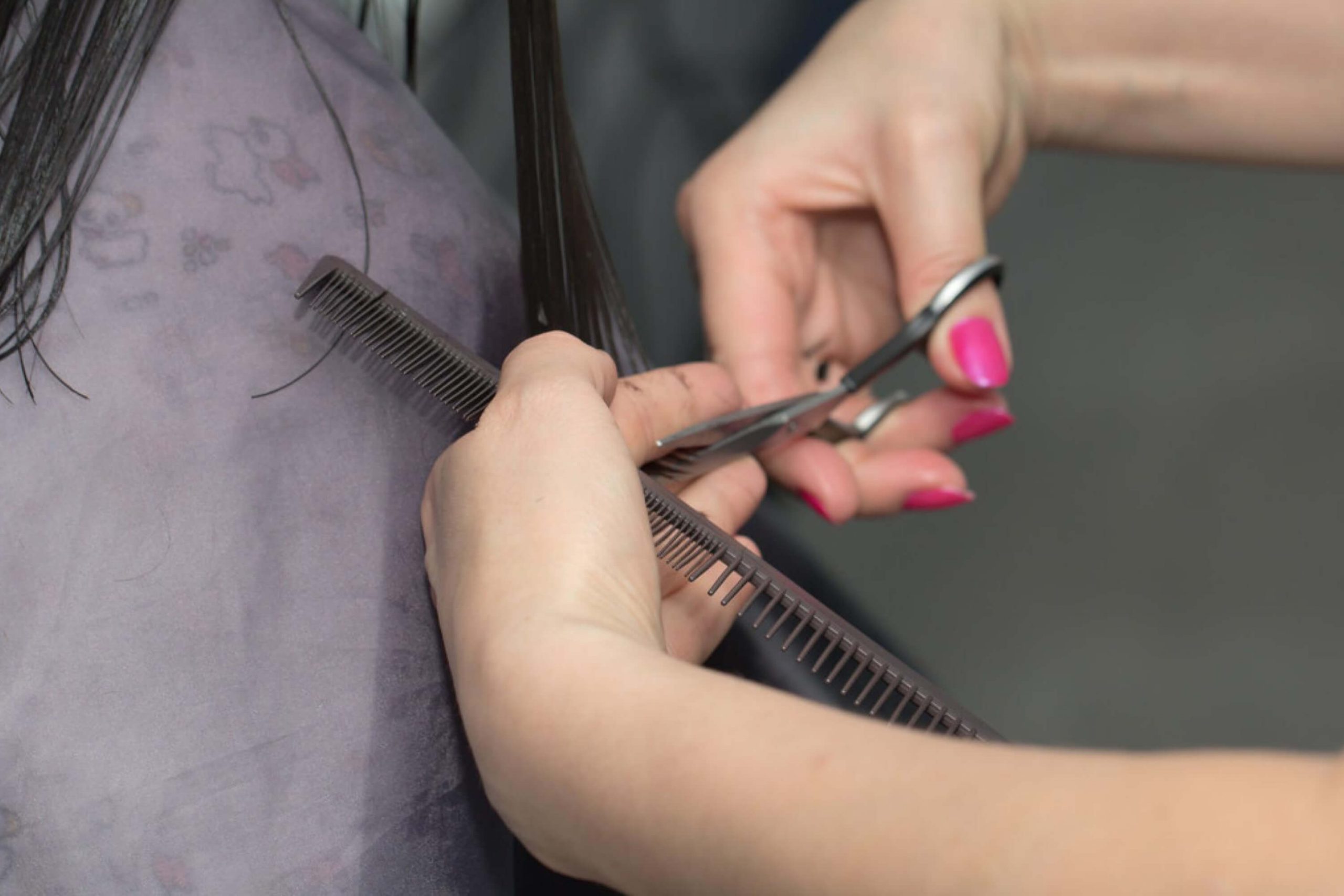
So now you know not only what a trim haircut is, but also why you should do it and how often.
And since you also know how to figure out it’s time to visit a salon, we’re sure your hair will always look gorgeous!
[wp-faq-schema title=”Frequently Asked Questions”]
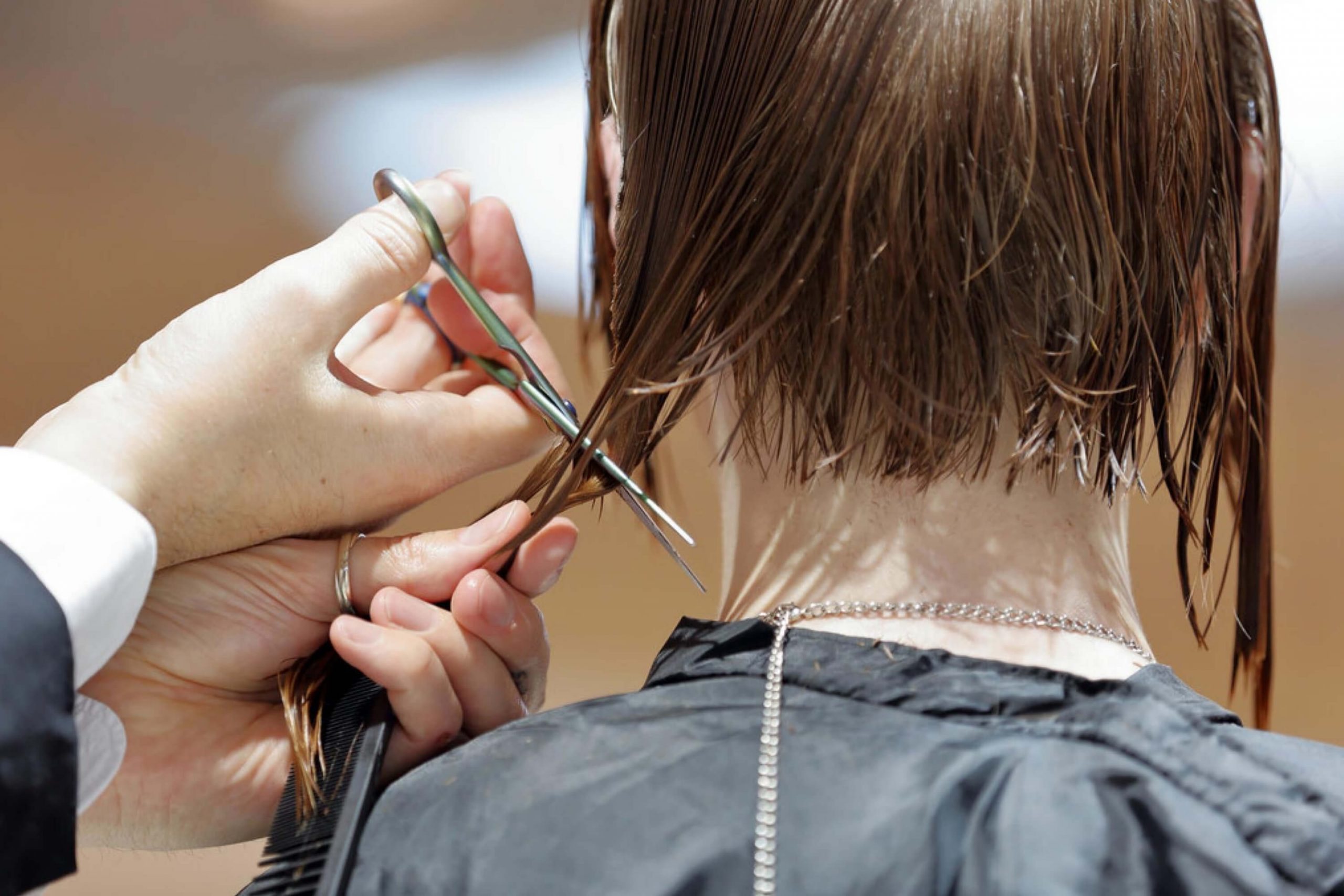
Does anyone know what is cheaper: a trim or a normal haircut? Need to go to a salon but can’t figure out how much that will cost!
I guess the price will mostly depend on the length of your hair, but it does not matter whether you’re making a trim or a normal cut. The price will be the same.
Is it necessary to get a trim if my hair is healthy?
Well, I guess you can just do it as a preventive optio against possible split ends. Once a month would be ok I assume.
What do I tell my barber for a trim? I used to have a couple of unfortune haircuts after I said I just wanted a bit to be taken off the top. How do I avoid that next time?
I guess you just need to be as precise as possible! Instead of saying something like “Give me a trim, Sam” or “Just a little off the top”, describe in detail how much hair you want to be taken off and where exactly. You can even bring photo samples with you! I do that and it really helps. Like that, my barber can see what I want.
I want to try a trim but I can’t find prices. To be honest, I’m afraid it might be a bitexpensive… Is a trim the same price as a haircut?
To be honest, I’m pretty sure it depends on a salon. I know some salons charge the same price for trims and haircuts whilst others set a different price for a trim and for a haircut.
What is the difference between a hair cut and a trim? I’m always puzzled when I come to a salon and need to explain what exactly I need! To me, these two are the same. Am I not right?
Well, in fact, you’re not. See, A hair cut is changing the style and shape of your hair completely. A hair trim, on the other hand, is helping you maintain the style and shape of your cut as well as removing any damage. So if you just need to keep your current shape and style in a decent state, you should ask for a trim. But if you want something completely different, then you need a cut.
Hi! Folks, I need your assistance please! What do I tell my barber for a trim? I mean, how do I explain it? If I need a trim and I come to a barbershop, shall I just say something like “Hey, Sam, I need a quick trim please”?
Well, I use the following scheme (maybe you’ll find it helpful): I tell my barber what general style I want, and then I tell him exactly how much I want taken off. I often come with a picture of the hairstyle I want to make it as clear to him as possible.
What’s better, a trim vs cut hair?
It depends on what you need. If you want a completely different hairstyle, then you need a haircut. But if you’re satisfied with your current hairstyle and you just want to refresh it a bit, then a trim is your choice.
Hey everyone! Need your help folks. See, I’m going to cut my hair short but this is what I can’t figure out: what’s the difference between trim and cut hair? Can anyone explain in simple words?
Well, basically haircut and hair trim have nothing to do with the length of your hair. See, a hair cut is changing the style and shape of your hair completely. A hair trim is about helping you maintain the style and shape of your cut that you already have.
How to ask for a trim haircut correctly so that a hairdresser does exactly what I need? It’s a real issue for me since each time I end up with not quite what I asked for!
Oh, I had the same problem for quite a while too! And the best solution I found is just to show the hairdresser what I need. I simply google the picture of the haircut I want and show it to the specialist. For now, this is the best way to explain my requirements!
Hey! I need your help guys. Look, I’ve recently been at a hair salon and I asked for “just a trim haircut”. And my hairdresser said it’s not correct, I need to either choose a haircut or a trim. What does that mean?
That means a haircut and a trim are different things. A hair cut means you change the style and shape of your hair completely. A hair trim means you maintain the style and shape of your cut that you already have.
What do I tell my barber for a trim? Do I need to give any precise explanation or saying “I need a trim” would be fine?
I guess that depends on a barber. I had one whom I could simply say “hey, man, just a trim please”, and he’d do a perfect job! But mostly, I have to explain in detail what I want. I’m pretty sure it’s about the experience of a barber.
I want to ask for your help, everyone! Look, I’ve recently faced an isse with prices at hairdresser’s. Does a trim cost the same as a haircut? Because I often see that salons charge different prices for these services.
No, the price won’t be the same. A trim is generally cheaper than a typical haircut, as haircuts typically involve removing more hair length than a trim.
What does a hair trim do for your hair? Is it really so necessary? My new hairdresser insists on me visiting the salon every other month for a trim. Is trimming hair THAT often normal?
AS far as I know, trim allows you to maintain the shape of your current haircut. Plus, it prevents split ends and other unpleasant states your hair may develop. But the frequency depends on your hair type and condition. If it has split ends already, then frequent trims might really be needed.